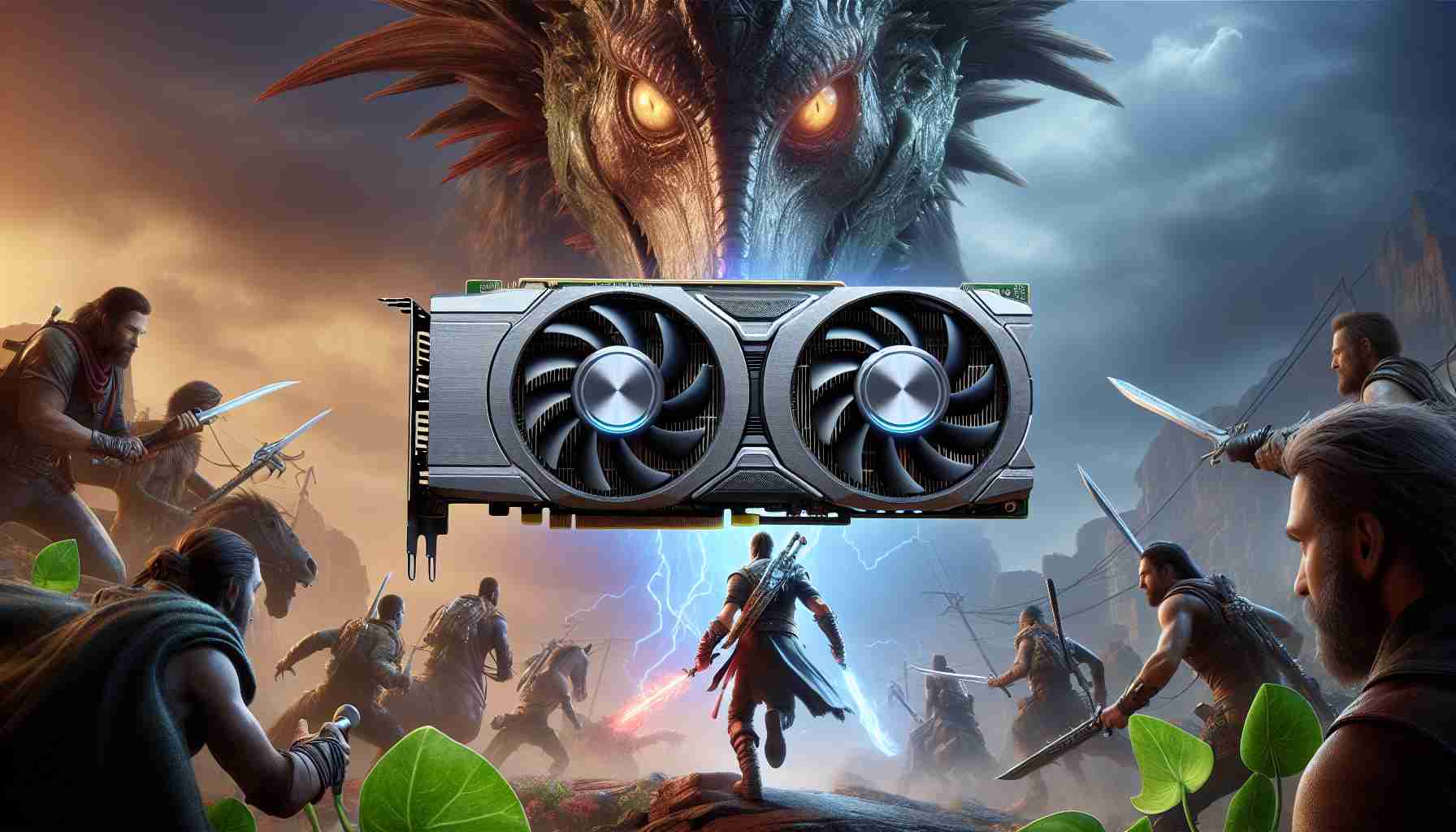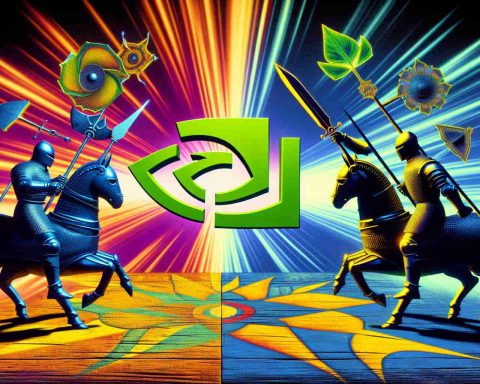In the rapidly evolving world of technology, the concept of multi-GPU setups for gaming, such as SLI (Scalable Link Interface) and CrossFire, has become somewhat obsolete. However, the potential of dual-GPU configurations remains valuable in various applications, as showcased by the impressive FluidX3D demo. Developer Dr. Moritz Lehmann, operating under the ProjectPhysX brand, presented a configuration that combined an Intel A770 with an Nvidia Titan Xp, a system with a significant seven-year lifespan. Although this combination might appear unconventional, the results undeniably demonstrate the powerful synergy between these two GPUs.
The multi-GPU demo turned out to be remarkably straightforward. Dr. Lehmann employed Acer’s Predator A770 16GB and Nvidia’s Titan Xp, with each GPU simulating and rendering half of the simulation. While DX12 and Vulkan are the most popular APIs for multi-GPU operations, FluidX3D runs on OpenCL, an open standard for parallel programming developed by the Khronos Group, the same organization responsible for Vulkan.
While precise performance data was not provided, Dr. Moritz claims that the dual-GPU setup proved to be 70% more efficient than using each GPU individually. This increase in efficiency is expected due to the A770 and Titan Xp delivering comparable results in FluidX3D. The simulation itself took one hour and 13 minutes, with the rendering process lasting approximately 14 minutes. Consequently, running the simulation individually on each card would require approximately two hours.
Although the combination of powerful and significantly weaker GPUs may seem strange at first sight, there is a rational justification behind it. As the developer emphasizes, it is not effective to combine extremely powerful GPUs with significantly weaker ones. In the case of FluidX3D, it is advantageous for the GPUs to have similar memory capacity and bandwidth. The A770 comes equipped with 16GB memory and 560GB/s bandwidth, while the Titan Xp offers 12GB memory and 548GB/s bandwidth. Thus, this dual-GPU combination proves to be a sensible choice.
It is surprising to consider that the gaming industry has essentially abandoned multi-GPU technology, despite the 70% performance boost demonstrated in the FluidX3D demo. During the demo, commentators were quick to point out that both DX12 and Vulkan provide substantial support for this technology, with GPU-to-GPU connections becoming more reliable than ever thanks to blazing-fast PCIe versions.
Responding to these comments, Dr. Moritz provided an analysis that shed light on several issues related to multi-GPU configurations in gaming. One of the primary concerns revolves around the costs associated with developing multi-GPU solutions for games. In the past, Nvidia and AMD shouldered this burden, but with the advent of DX12 and Vulkan, the responsibility has shifted to game developers. These APIs offer powerful multi-GPU capabilities but require manual optimization to be effective. However, given that multi-GPU support has always been a niche feature, even among PC enthusiasts, game developers do not reap the benefits of implementation.
Rather than investing further in multi-GPU technologies, the industry has been shifting focus toward achieving greater performance using a single GPU configuration. The trend revolves around creating larger flagship models that have grown so substantial that, as Dr. Moritz humorously puts it, „you can’t even fit one of them in a regular computer case, let alone two.” With GPUs like the RTX 4090 Founders Edition occupying three slots, it’s easy to understand the shift in approach. Currently, multi-GPU technology thrives in data centers, supercomputers, and AI-focused systems, where the cost of implementation is justified.
Frequently Asked Questions:
1. Koks buvo multi-GPU technologijos naudojimas pristatytame demonstraciniame vaizdo įraše?
Multi-GPU technologija buvo naudojama simuliacijų atkurimui ir gavimui FluidX3D programoje.
2. Kokie vaizdo plokštės buvo naudojami dual-GPU konfigūracijoje?
Demonstracijoje buvo naudojamos Acer Predator A770 16GB ir Nvidia Titan Xp vaizdo plokštės.
3. Kuria programavimo sąsaja (API) buvo naudojama demonstraciniame vaizdo įraše?
Demonstracijoje buvo naudojama OpenCL programavimo sąsaja, kuri buvo sukūri Khronos grupės.
4. Kokia buvo numatoma našumo padidėjimo iš dual-GPU konfigūracijos?
Pagal demonstracijos kūrėjo teiginius, dual-GPU konfigūracija buvo 70% efektyvesnė nei kiekviena vaizdo plokštė atskirai.
5. Kokie buvo pagrindiniai su multi-GPU konfigūracijomis susiję iššūkiai žaidimams?
Pagrindiniai iššūkiai buvo susiję su aukštais kaštais, kurie kyla kuriant multi-GPU sprendimus žaidimams, taip pat su pelningumo trūkumu žaidimų kūrėjams kuriant multi-GPU palaikymą.
6. Kokie yra šiuo metu vyraujantys tendencijos pramonėje dėl vaizdo plokštės našumo?
Šiuo metu pramonė orientuojasi į vienos vaizdo plokštės konfigūraciją, kuriamos didesnės ir galingesnės modelio vyriai, o ne naudojamas multi-GPU technologija.
Apibrėžimai:
– Multi-GPU: Technologija, leidžianti naudoti kelias vaizdo plokštes vienu metu siekiant padidinti našumą.
– SLI: Scalable Link Interface – technologija, sukurtą Nvidia, leidžianti jungti dvi ar daugiau vaizdo plokščių siekiant padidinti našumą.
– CrossFire: Technologija, sukurtą AMD, leidžianti sujungti kelias vaizdo plokštes siekiant padidinti našumą.
– GPU: Vaizdo plokštės modulis, atsakingas už grafikos apdorojimą.
– Demo: Demonstracija ar presentation.
– API: Application Programming Interface – rinkinys protokolų ir įrankių programinėms aplikacijoms kurti.
– DX12: DirectX 12, tinkama API kurti programoms su Windows operacinėmis sistemomis.
– Vulkan: Efektyviam darbui kryžminės platformos API.
– OpenCL: Open Computing Language – atviro standarto platforma kolaboratyviam programavimui skirta paleidinėti skirtingose prietaisose.
– Khronos Group: Organizacija, atsakinga už multimediškoji technologijos standartizavimą.
– PCIe: Peripheral Component Interconnect Express – kompiuterio jungtis, kuri daugiausiai naudojama kompiuteriuose.
– Dual-GPU: Kompiuterio konfigūracija, kurioje yra dvi vaizdo plokštės.
– Superkompiuteriai: Aukšto našumo kompiuteriai, skirti sudėtingiems skaičiavimams atlikti.
Šaltiniai:
– Nvidia: https://www.nvidia.com/
– AMD: https://www.amd.com/
– Khronos Group – OpenCL: https://www.khronos.org/opencl/
The source of the article is from the blog smartphonemagazine.nl







